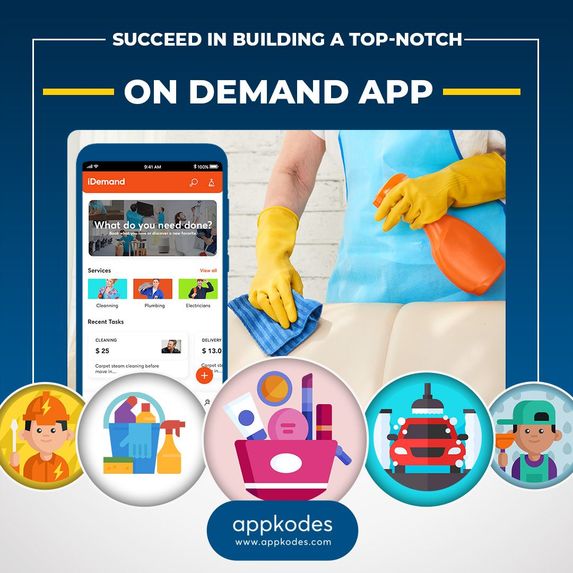In the age of on-demand services, TaskRabbit has established itself as a significant player in connecting people with freelance labor for various tasks. From assembling furniture to running errands, TaskRabbit’s platform facilitates a seamless interaction between clients and service providers. If you’re considering developing an app similar to TaskRabbit—commonly referred to as a “Taskrabbit clone“—you’ll need to navigate several essential stages of development and understand the costs involved. This guide will walk you through the process and provide insights into the associated expenses.
Understanding the TaskRabbit Model
Before diving into development, it’s crucial to understand the core features and functionalities of TaskRabbit. The app connects users who need tasks done with freelancers who are willing to perform these tasks. Key features include:
User Profiles: Both clients and freelancers create profiles with personal information, ratings, and reviews.
Task Posting: Clients can post tasks specifying details and pricing.
Task Browsing: Freelancers can browse available tasks and apply for them.
In-App Messaging: Communication between clients and freelancers is facilitated through the app.
Payment Integration: The app handles transactions between clients and freelancers.
Geolocation: Tasks are matched based on geographic location.
Ratings and Reviews: Both clients and freelancers can rate each other.
Steps to Develop a TaskRabbit Clone
1. Define Your Objectives
Before starting development, clearly outline your objectives. Are you aiming for a local market or a broader audience? Will you specialize in specific types of tasks or offer a broad range? Understanding your goals will guide the development process and help tailor the app to meet your specific needs.
2. Market Research
Conduct thorough market research to identify your target audience and analyze competitors. Study the features of TaskRabbit and other similar apps. This research will help you identify unique selling points and potential improvements for your TaskRabbit clone.
3. Choose a Platform
Decide whether you want to develop a native app for iOS, Android, or both, or if a cross-platform solution is more appropriate. Native apps often provide better performance and user experience, but they are more expensive to develop. Cross-platform solutions, like React Native or Flutter, allow for a single codebase that works across multiple platforms, potentially reducing costs.
4. Design the User Interface
Design a user-friendly and intuitive interface. The design should cater to both clients and freelancers, ensuring ease of use. Wireframes and prototypes will help visualize the app’s flow and functionality before development begins. Focus on creating an engaging and simple experience that encourages user interaction.
5. Develop the App
The development process involves several key stages:
Backend Development: Build the server-side components, including databases, APIs, and user management systems. This is where user data, task details, and transactions are handled.
Frontend Development: Develop the client-side components, including the app’s user interface and user experience elements.
Integration: Incorporate third-party services such as payment gateways (e.g., Stripe, PayPal) and geolocation services (e.g., Google Maps API).
6. Testing
Thoroughly test the app to identify and fix bugs. Testing should cover functionality, usability, performance, and security. Use beta testers to gather feedback and make necessary adjustments before the official launch.
7. Launch and Marketing
Prepare for the app launch by creating a marketing strategy. Utilize social media, search engine optimization (SEO), and other digital marketing techniques to attract users. Monitor the app’s performance post-launch and be ready to address any issues or updates.
Cost Breakdown of Developing a TaskRabbit Clone
The cost of developing a TaskRabbit clone can vary significantly based on several factors. Here’s a general breakdown of potential costs:
1. Planning and Design
Market Research: $2,000 – $5,000
UI/UX Design: $5,000 – $15,000
Design costs depend on the complexity of the interface and the experience level of the designers.
2. Development
Backend Development: $15,000 – $30,000
Frontend Development: $20,000 – $40,000
Integration and APIs: $5,000 – $15,000
Development costs vary based on the app’s complexity, features, and the region where the development team is located.
3. Testing
Quality Assurance: $5,000 – $10,000
Thorough testing ensures the app is reliable and user-friendly. Costs can vary depending on the scope of testing and the need for beta testing.
4. Launch and Marketing
Marketing Strategy: $5,000 – $15,000
App Store Registration: $100 (one-time fee for each platform)
Marketing costs include promotions, advertising, and other efforts to drive app downloads and user engagement.
5. Maintenance
Ongoing Maintenance: $2,000 – $5,000 per month
Post-launch maintenance includes bug fixes, updates, and server costs.
Total Estimated Cost
In summary, the total cost to develop a TaskRabbit clone can range from $50,000 to $120,000 or more. This estimate varies based on the complexity of the app, the features included, and the development team’s location and expertise.
Conclusion
On Demand App Development involves several stages, from initial planning to post-launch marketing. Understanding the essential features and the cost components will help you make informed decisions and ensure a successful development process. Whether you’re aiming to create a local service app or a broad platform, careful planning and budgeting are key to bringing your TaskRabbit clone to life. With the right approach, your app can become a valuable tool for connecting clients with reliable service providers, just like TaskRabbit.












